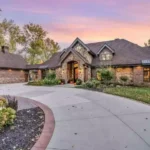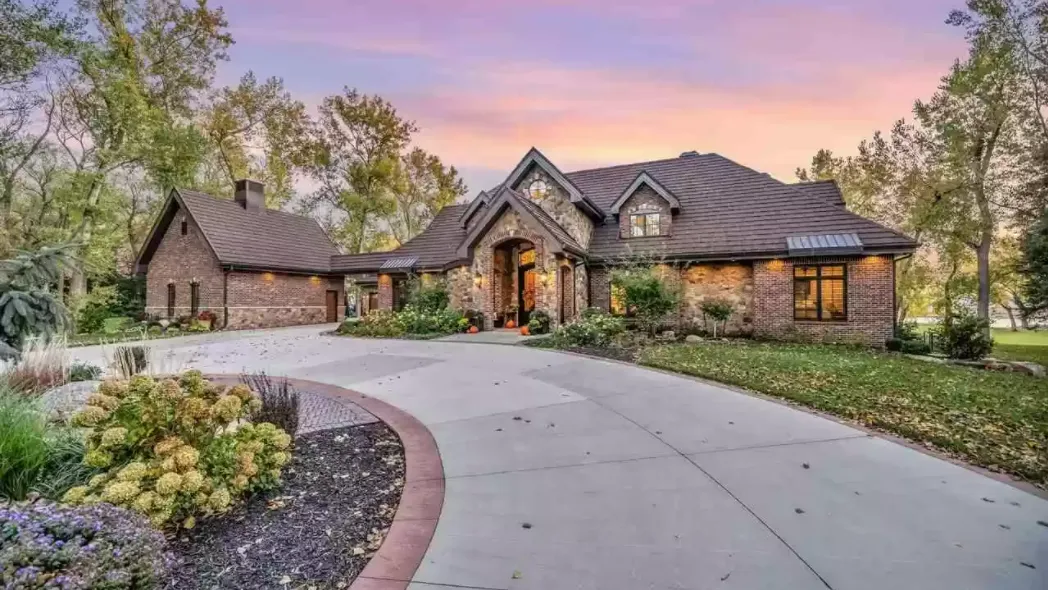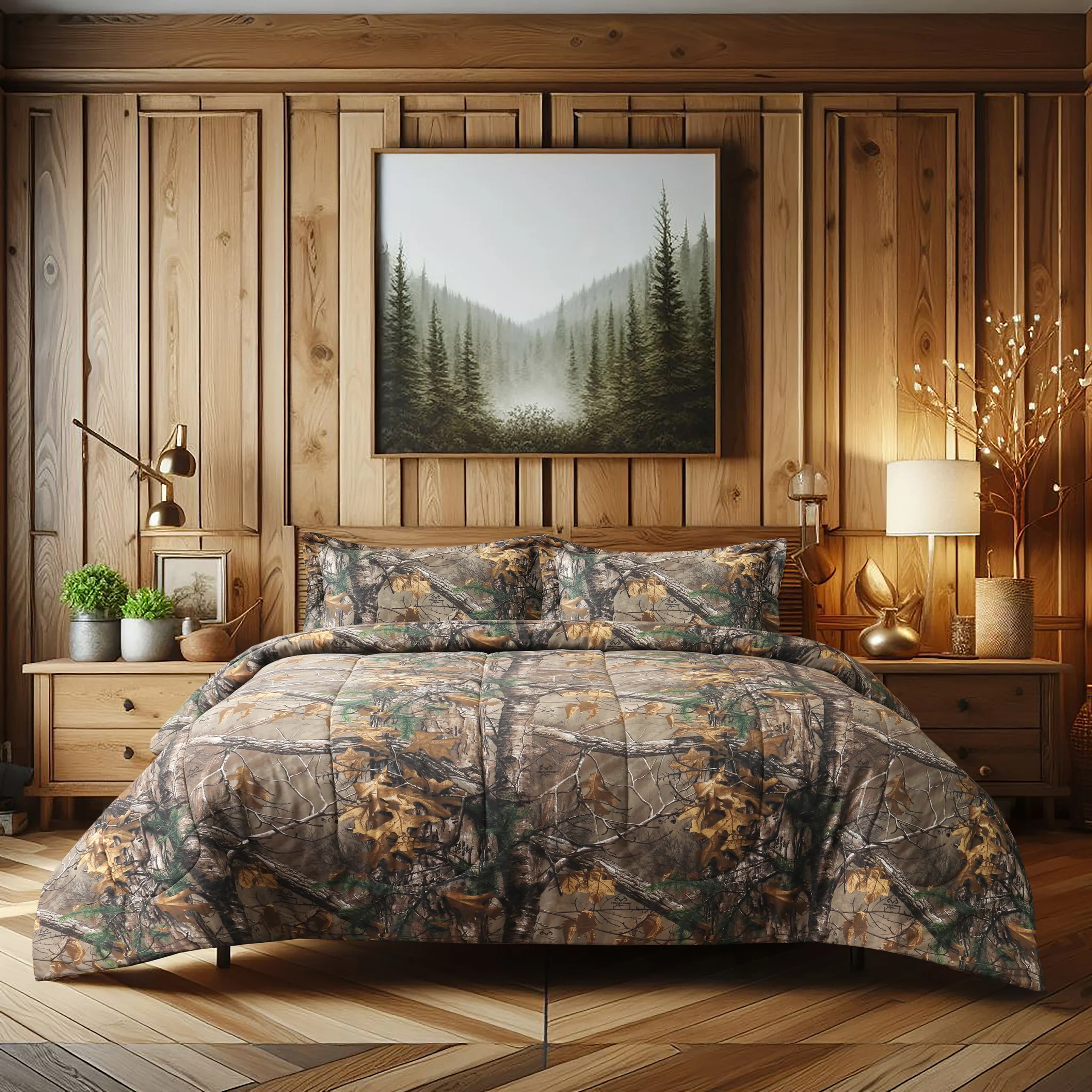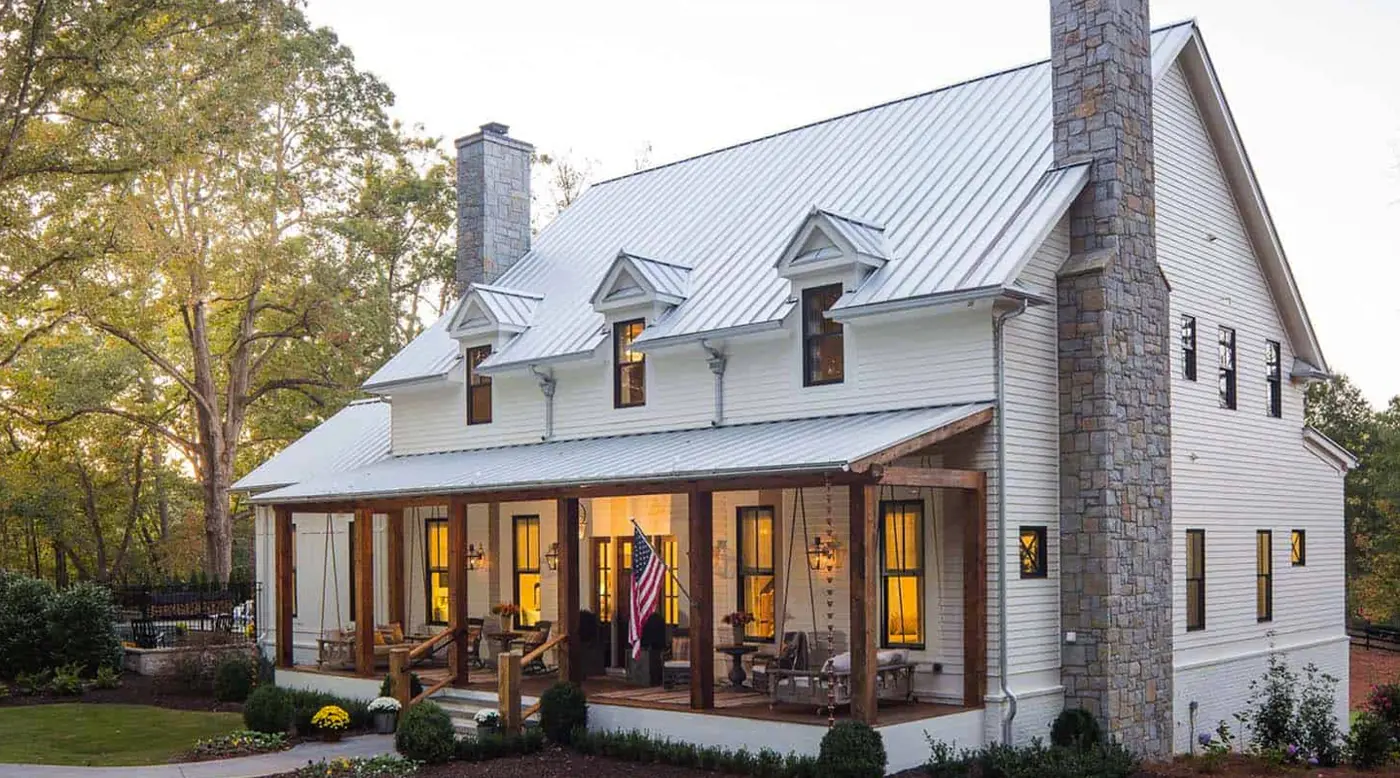It was an overcast afternoon, and as Jenny strolled down the narrow cobblestone street, her eyes were drawn to a house that starkly contrasted its surroundings. With its pointed arches, steep roofs, and intricate stone carvings, the structure loomed above her like a grand, forgotten relic from another time. Dark, romantic, and almost hauntingly beautiful, it was a Gothic Victorian house—a blend of brooding medieval elements and the grandeur of the Victorian era. For a moment, Jenny felt transported to a different century, imagining horse-drawn carriages, gas-lit streets, and the soft flicker of candlelight behind the towering stained-glass windows. The house, once a symbol of wealth and status, now stood as a testament to a time when architecture was about more than just function—it was an expression of mystery, elegance, and the human fascination with the sublime.
Gothic Victorian houses, with their dramatic facades and unique blend of historical influences, remain some of the most captivating architectural wonders in the world. In this article, we’ll explore the history and key features of Gothic Victorian houses, delve into the cultural factors that shaped their development, and examine why these homes continue to capture the imaginations of homeowners and architects today. We will also consider the challenges of preserving these homes and look at key statistics in the housing market for Gothic Victorian properties.
A Historical Overview: The Birth of the Gothic Victorian Style
The Gothic Victorian house is a product of the Victorian Gothic Revival. This design movement emerged in the mid-19th century and was heavily influenced by the romanticized view of the Middle Ages. Architects during the Victorian period—primarily in England and later the United States—began reviving medieval Gothic architecture elements, incorporating them into modern homes and public buildings. This movement was driven by a fascination with the past, particularly the Gothic period (12th to 16th centuries), associated with mystery, spirituality, and grandeur.
Gothic Revival architecture first gained prominence in the UK with Horace Walpole’s Strawberry Hill in the mid-18th century, a grand mansion that embraced pointed arches, battlements, and ornamental details that were distinctly medieval. The movement gained even more traction during the Victorian era, championed by architects like Augustus Pugin, who believed that Gothic architecture better reflected Christian values and the moral superiority of medieval craftsmanship.
In the United States, the Gothic Victorian style gained popularity around 1840 to 1880, with architects like Andrew Jackson Downing and Alexander Jackson Davis leading the charge. They adapted the Gothic Revival style to suit American tastes, creating grand homes for the country’s wealthy elite. These houses typically featured steeply pitched roofs, pointed arches, intricate woodwork, and large windows with decorative tracery, blending medieval design elements with the grandeur and technological innovations of the Victorian era.
Architectural Features of Gothic Victorian Houses
Their dramatic, almost theatrical appearance sets Gothic Victorian houses apart from other architectural styles. These homes were designed to evoke a sense of awe, blending romanticism with a dark, mysterious edge. Below are some of the key architectural features that define Gothic Victorian homes:
- Pointed Arches: Perhaps the most iconic element of Gothic architecture, pointed arches can be found in doorways, windows, and other structural features of Gothic Victorian homes. This distinctive shape adds height and elegance and serves as a nod to the medieval cathedrals that inspired the style.
- Steeply Pitched Roofs: Gothic Victorian homes often feature sharply angled, steep roofs, contributing to their vertical, imposing appearance. Gabled roofs are often adorned with finials and decorative cresting, enhancing the house’s intricate design.
- Ornate Woodwork (Gingerbread Trim): Known as gingerbread trim, the elaborate wooden detailing found on many Gothic Victorian homes is a hallmark of the style. These lacy, often highly intricate carvings can be found along eaves, porches, and windows, contrasting the otherwise brooding architecture.
- Tall, Narrow Windows: Gothic Victorian houses often feature tall, narrow windows framed by pointed arches or adorned with intricate tracery. Many of these windows are filled with stained glass, adding both color and texture to the home’s interior and exterior.
- Asymmetry: Unlike the balanced symmetry in other architectural styles, Gothic Victorian homes often embrace asymmetry. Towers, turrets, and bays are placed irregularly, giving each house a unique and unpredictable silhouette.
- Towers and Turrets: Many Gothic Victorian homes feature one or more towers or turrets that add to their castle-like appearance. These vertical elements not only create visual interest but also serve to emphasize the house’s sense of grandeur and height.
- Intricate Stone or Brickwork: While some Gothic Victorian homes are made of wood, many incorporate detailed stone or brickwork, often with contrasting colors or patterns that highlight the house’s architectural complexity.
The Market for Gothic Victorian Homes: Statistics and Trends
Despite their age, Gothic Victorian houses remain highly sought-after, especially by those who appreciate their historical significance and unique architectural charm. However, the real estate market for these homes can be a bit niche, as they appeal to a specific type of buyer—one willing to invest in the upkeep and restoration of a historic property.
According to the National Trust for Historic Preservation, historic homes—including Gothic Victorians—often sell for 5-10% more than comparable modern homes, reflecting their rarity and cultural value. Additionally, a 2021 survey by Realtor.com found that 67% of potential homebuyers expressed interest in purchasing a historic property, citing architectural beauty, uniqueness, and the opportunity to own a piece of history. (Source: National Trust for Historic Preservation, Realtor.com Survey 2021).
However, the same survey also highlighted some of the challenges of purchasing a Gothic Victorian home. 45% of respondents cited concerns about the cost of maintenance and repairs, as many of these homes require specialized restoration work to preserve their historical integrity. Given that most Gothic Victorian homes are over 100 years old, issues such as outdated electrical systems, plumbing, and insulation are common and can add to the overall cost of ownership. (Source: Realtor.com Survey 2021).
The Challenges and Rewards of Owning a Gothic Victorian House
Owning a Gothic Victorian home is often described as a labor of love and a rewarding investment. While these houses offer unparalleled architectural beauty, they come with unique challenges that prospective homeowners must consider.
- Maintenance and Restoration: Many Gothic Victorian homes have been standing for well over a century, and with that age comes the need for ongoing maintenance and, in some cases, significant restoration. From repairing gingerbread trim to restoring stained glass windows, maintaining the intricate details of these homes requires both time and money. Homeowners may also need to seek out specialized contractors familiar with historic restoration techniques.
- Modernization: Bringing a Gothic Victorian house into the 21st century can be a delicate balancing act. Homeowners often want to modernize kitchens, bathrooms, and electrical systems without compromising the house’s historic integrity. According to a survey by Houzz, 73% of landmark home buyers invest in modernizing their home’s infrastructure while preserving its original character. (Source: Houzz 2022 Historic Home Renovation Survey).
- Energy Efficiency: Older homes, particularly Gothic Victorians, are often less energy-efficient than modern homes. Drafty windows, lack of insulation, and outdated heating systems can make these homes expensive to heat and cool. Many owners install modern insulation, energy-efficient windows, and other upgrades to improve their home’s energy performance without detracting from its historic appeal.
Preserving the Gothic Victorian Legacy: Historic Designations and Incentives
Fortunately, many Gothic Victorian homes are protected by historic preservation laws, ensuring their unique features are preserved for future generations. Homes located within designated historic districts or listed on the National Register of Historic Places often qualify for special grants and tax incentives aimed at helping homeowners maintain and restore their properties.
For example, the National Park Service offers federal tax credits for up to 20% of the cost of rehabilitating a historic home, provided the renovations meet certain criteria for historical accuracy. These programs help offset the cost of preserving Gothic Victorian houses, making it easier for homeowners to invest in restoration projects. (Source: National Park Service Historic Preservation Tax Incentives).
Conclusion: The Timeless Appeal of Gothic Victorian Houses
Gothic Victorian houses stand as monumental testaments to an era of architectural grandeur and creativity. Their pointed arches, steep roofs, and intricate details transport us to a time when homes were built not just to shelter but to inspire. While owning and maintaining these homes can be challenging, the rewards are immense. For those who appreciate history, artistry, and a little bit of mystery, Gothic Victorian houses offer an unparalleled opportunity to own a piece of architectural legacy.
As more homeowners embrace the value of historic properties, Gothic Victorian homes continue to captivate and endure, their dark, romantic charm remaining timeless in a rapidly changing world. Whether as personal residences or architectural landmarks, these homes invite us to explore the intersection of history, design, and culture, offering a window into the past while enriching the present.












 Afrikaans
Afrikaans Shqip
Shqip አማርኛ
አማርኛ العربية
العربية Հայերեն
Հայերեն Azərbaycan dili
Azərbaycan dili Euskara
Euskara Беларуская мова
Беларуская мова বাংলা
বাংলা Bosanski
Bosanski Български
Български Català
Català Cebuano
Cebuano Chichewa
Chichewa 简体中文
简体中文 繁體中文
繁體中文 Corsu
Corsu Hrvatski
Hrvatski Čeština
Čeština Dansk
Dansk Nederlands
Nederlands English
English Esperanto
Esperanto Eesti
Eesti Filipino
Filipino Suomi
Suomi Français
Français Frysk
Frysk Galego
Galego ქართული
ქართული Deutsch
Deutsch Ελληνικά
Ελληνικά ગુજરાતી
ગુજરાતી Kreyol ayisyen
Kreyol ayisyen Harshen Hausa
Harshen Hausa Ōlelo Hawaiʻi
Ōlelo Hawaiʻi עִבְרִית
עִבְרִית हिन्दी
हिन्दी Hmong
Hmong Magyar
Magyar Íslenska
Íslenska Igbo
Igbo Bahasa Indonesia
Bahasa Indonesia Gaeilge
Gaeilge Italiano
Italiano 日本語
日本語 Basa Jawa
Basa Jawa ಕನ್ನಡ
ಕನ್ನಡ Қазақ тілі
Қазақ тілі ភាសាខ្មែរ
ភាសាខ្មែរ 한국어
한국어 كوردی
كوردی Кыргызча
Кыргызча ພາສາລາວ
ພາສາລາວ Latin
Latin Latviešu valoda
Latviešu valoda Lietuvių kalba
Lietuvių kalba Lëtzebuergesch
Lëtzebuergesch Македонски јазик
Македонски јазик Malagasy
Malagasy Bahasa Melayu
Bahasa Melayu മലയാളം
മലയാളം Maltese
Maltese Te Reo Māori
Te Reo Māori मराठी
मराठी Монгол
Монгол ဗမာစာ
ဗမာစာ नेपाली
नेपाली Norsk bokmål
Norsk bokmål پښتو
پښتو فارسی
فارسی Polski
Polski Português
Português ਪੰਜਾਬੀ
ਪੰਜਾਬੀ Română
Română Русский
Русский Samoan
Samoan Gàidhlig
Gàidhlig Српски језик
Српски језик Sesotho
Sesotho Shona
Shona سنڌي
سنڌي සිංහල
සිංහල Slovenčina
Slovenčina Slovenščina
Slovenščina Afsoomaali
Afsoomaali Español
Español Basa Sunda
Basa Sunda Kiswahili
Kiswahili Svenska
Svenska Тоҷикӣ
Тоҷикӣ தமிழ்
தமிழ் తెలుగు
తెలుగు ไทย
ไทย Türkçe
Türkçe Українська
Українська اردو
اردو O‘zbekcha
O‘zbekcha Tiếng Việt
Tiếng Việt Cymraeg
Cymraeg isiXhosa
isiXhosa יידיש
יידיש Yorùbá
Yorùbá Zulu
Zulu